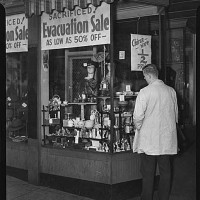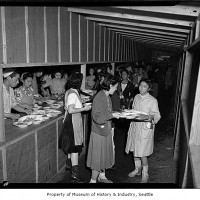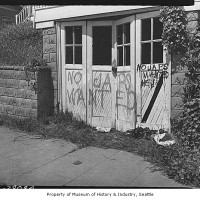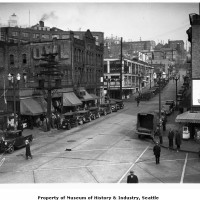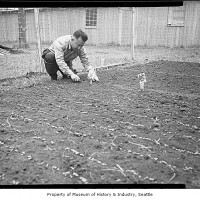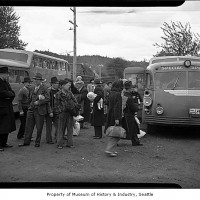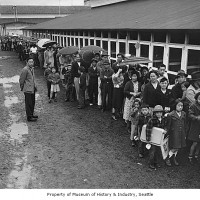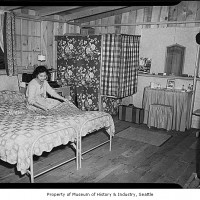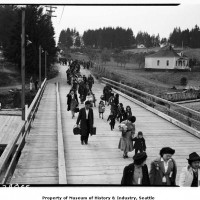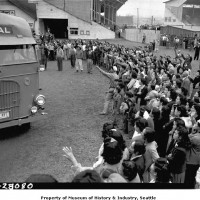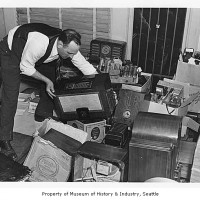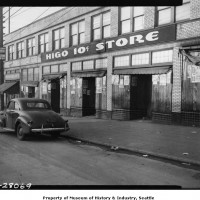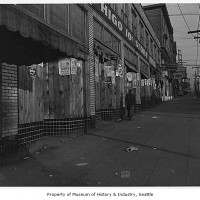The bombing of Pearl Harbor by Japan in December 1941 set in motion a series of events and decisions that led to what has been called the worst violation of constitutional rights in American history: the expulsion and imprisonment of 110,000 persons of Japanese ancestry from the U.S. West Coast. Two thirds of them were American citizens
The U.S. government wasted no time in clamping down on the 9,600 Japanese Americans in King County. On the evening of December 7, the FBI began to arrest Issei (first generation Japanese) and a few Nisei (second generation), including Buddhist priests, Japanese language teachers, officials, and leaders of community organizations whom the FBI considered potential spies.
In the following days, Japanese were ordered to stay away from railroad tunnels, highway bridges, and radio stations. Travel was restricted. Issei business licenses were revoked and bank accounts were frozen.
The push to expel the Japanese was centered in California and led by white farmers. In many ways, the antagonism merely continued nearly a century of hate and exclusion campaigns, first against the Chinese and then the Japanese. California state Attorney General Earl Warren, the future Supreme Court Chief Justice, was among those who asserted that the absence of Japanese "fifth column" activity (absence of activity by any group secretly in sympathy with Japan) on the West Coast was evidence that they were secretly planning another attack.
In Seattle, local Japanese began to feel the heat. At King Street Station, Japanese redcap porters were replaced by Filipinos wearing large identification buttons reading "Filipino." In early 1942, 26 Nisei women resigned as clerks from Seattle elementary schools after the district received complaints from parents.





